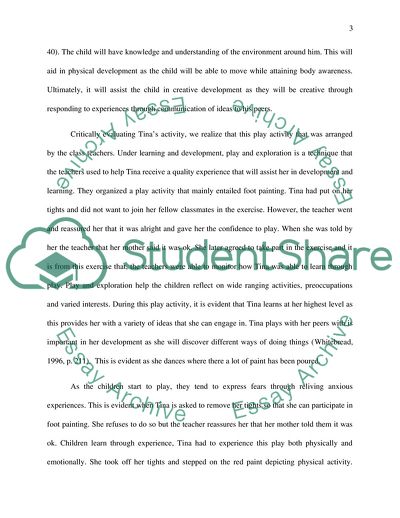Cite this document
(The Early Years Foundation Stage Case Study Example | Topics and Well Written Essays - 1750 words, n.d.)
The Early Years Foundation Stage Case Study Example | Topics and Well Written Essays - 1750 words. https://studentshare.org/education/1759180-play-activity-observation-with-critical-evaluation
The Early Years Foundation Stage Case Study Example | Topics and Well Written Essays - 1750 words. https://studentshare.org/education/1759180-play-activity-observation-with-critical-evaluation
(The Early Years Foundation Stage Case Study Example | Topics and Well Written Essays - 1750 Words)
The Early Years Foundation Stage Case Study Example | Topics and Well Written Essays - 1750 Words. https://studentshare.org/education/1759180-play-activity-observation-with-critical-evaluation.
The Early Years Foundation Stage Case Study Example | Topics and Well Written Essays - 1750 Words. https://studentshare.org/education/1759180-play-activity-observation-with-critical-evaluation.
“The Early Years Foundation Stage Case Study Example | Topics and Well Written Essays - 1750 Words”. https://studentshare.org/education/1759180-play-activity-observation-with-critical-evaluation.


